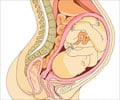The link between previous termination of pregnancy (abortion) and preterm delivery in a subsequent pregnancy has disappeared over the last 20-30 years, analysis of data shows.

These findings are important as the current recommendations to discuss a possible increased risk of preterm birth if a woman has an abortion were based on studies before 2000. The current analysis indicates that there is no link between abortion and the subsequent risk of preterm birth in modern practice and so current guidelines may have to be revised.
By using a large dataset from Scotland, the authors found that out of 757,060 live first births (excluding twins) between 1980 and 2008, 56,816 women reported one previous termination, 5,790 women reported two previous terminations, and 822 women reported three or more previous terminations. After adjusting for maternal characteristics, the authors found that there was a strong link between spontaneous preterm birth and previous abortion in 1980-1983, with a >30% increase in the risk of preterm birth with each previous procedure. However, this link progressively weakened, with a 10-20% increase in risk for preterm births in the 1990s, and no link at all from 2000 onwards.
The likely explanation for these findings is changes in methods of abortion. Over the period 1992 to 2008, the authors found that the procedure thought most likely to be lead to an increased risk of preterm birth (purely surgical abortion without the use of any drugs) decreased from 31% in 1992 to 0.4% in 2008. Furthermore, the proportion of medical terminations (procedures that avoided the use of surgery altogether) increased from 18% to 68%.
These findings suggest that use of purely surgical termination may have been responsible for the increased risk of spontaneous preterm birth and so, the phasing out of this procedure in Scotland in the 1980s and 1990s may have led to the subsequent disappearance of the established link between previous termination and preterm delivery from 2000 onwards. However, the authors could not directly test whether the two trends were related because they did not have information on the method of previous termination linked to subsequent birth outcome for individual women.
The authors say: "We have shown that previous abortion was a risk factor for preterm birth among nulliparous women in Scotland prior to 2000. However, increased use of medical methods of abortion and of cervical pre-treatment prior to surgical abortion has been paralleled by a disappearance in the association."
 MEDINDIA
MEDINDIA




 Email
Email







